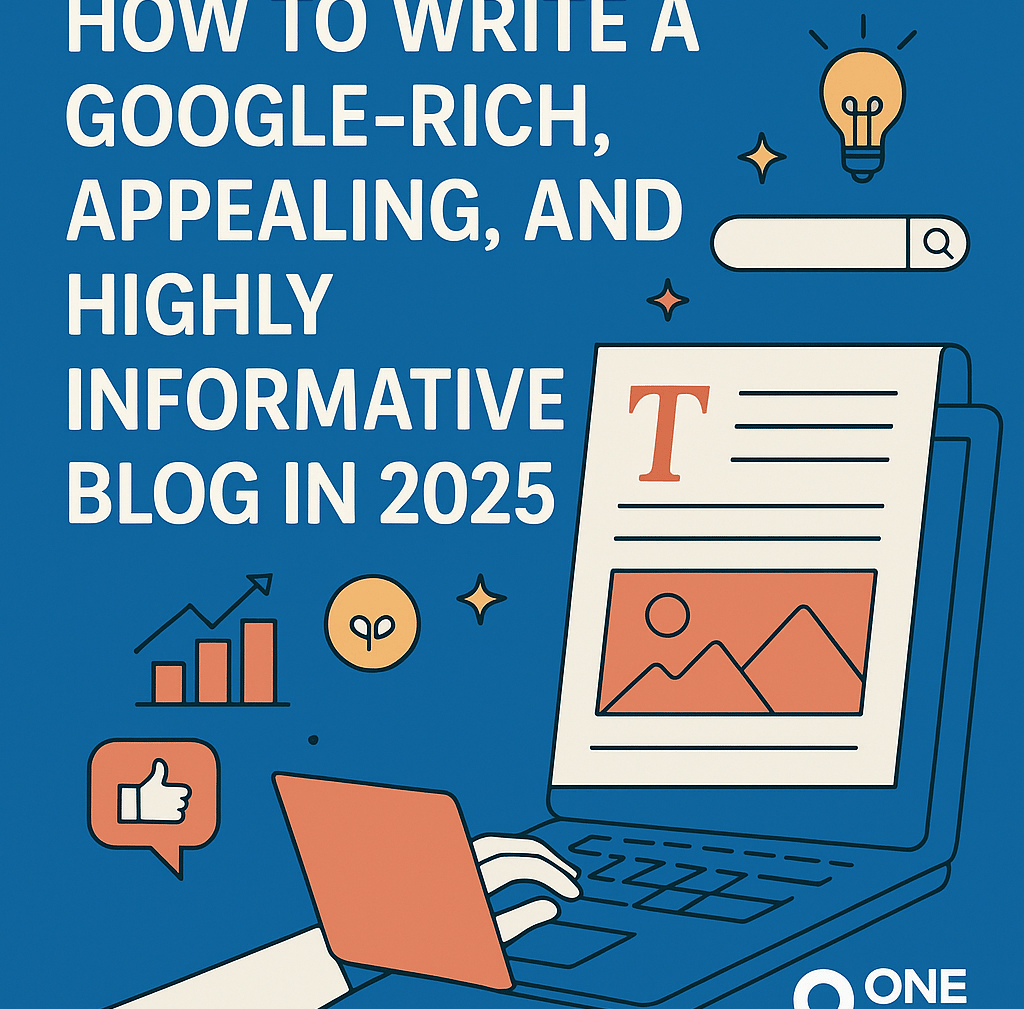Google Rich Blog Writing 2025: Complete Guide to SEO-Optimized Content
Saurodeep
7/29/20253 min read


How to Write a Google-Rich, Appealing, and Highly Informative Blog in 2025
Want your blog to rank on the first page of Google in 2025? Modern blogging is about more than words—it’s about strategic structure, rich keywords, user intent, and technical SEO. Here’s a practical guide to creating highly informative, visually rich, and keyword-focused blog posts that captivate readers and attract search engines alike.
Step 1: Powerful Topic and Keyword Selection
• Choose Trending or Evergreen Topics: Monitor trends and pick subjects relevant to your audience that have enduring interest.
• Conduct In-Depth Keyword Research: Use tools like Google Keyword Planner, Ahrefs, or Semrush to find high-traffic, low-competition short and long tail keywords.
• Keyword Placement: Integrate your main keyword in the title, introduction, meta description, at least one subheading, and naturally throughout the content.
Example Short Tail Keyword: blog writing
Example Long Tail Keyword: how to write an SEO-friendly blog for Google in 2025
Step 2: Structured Content for Readability and SEO
• Create a Compelling Headline: Use your primary keyword up front and make it curiosity-driven.
• Meta Description Optimization: Write a clear, concise summary (150–160 characters) with your main keyword.
• Use Subheadings and Bullets: Organize content into logical sections with H2/H3 headers using secondary keywords.
• Short Paragraphs & Lists: Keep paragraphs under four lines for easy scanning; use bullet points for clarity.
• Add a Table of Contents: Especially valuable for posts over 1,500 words.
• Internal Linking: Reference and link to relevant older blog posts for higher dwell time and authority.
Step 3: Write for Both Readers and Search Intent
• Understand what your target audience wants to learn or solve—answer their top questions, include practical tips, and address search intent directly.
• “People Also Ask” research can reveal related long tail keywords and questions to include.
• Provide value by adding unique insights, data, examples, case studies, and up-to-date facts.
Step 4: Integrate Google Rich Snippets and Visuals
• Add Structured Data (Schema Markup): Implement Article or BlogPosting schema to gain eligibility for rich results—extra details like images, FAQs, and author info in search snippets.
• Use Alt Text and File Names: Optimize every blog image with descriptive, keyword-rich alt text.
• Include Custom Media: Feature original or AI-generated images, infographics, or data charts every 300–350 words to keep readers engaged.
• Eligible For Rich Features: Consider adding FAQs, star ratings, and tables in your content (and structure them with schema markup) to boost your chances of enhanced listings on Google.
Step 5: Optimize and Refine for Maximum Google Appeal
• SEO-Friendly URLs: Keep URLs short, clean, and keyword-focused.
• On-Page Optimization: Strategically place keywords, but avoid overstuffing. Embed semantic and LSI (Latent Semantic Indexing) keywords for topic depth.
• External and Internal Links: Link to reputable sources and internal pages for credibility and navigation.
• Load Speed & Mobile Friendly: Ensure images are compressed and pages load quickly; test your blog’s mobile UX.
• Publish Author and Date Details: Boost E-E-A-T (Experience, Expertise, Authority, Trust) signals by displaying author profile, publication date, and organization.
• Monitor with Google Search Console: Track how your blog appears in search, fix errors, and maximize performance.
Expert Tips for Google-Rich, Engaging Blogs
• Prioritize information density—deliver value fast, avoid fluff, and break down complex ideas with examples and visuals.
• Regularly update older posts to maintain topical freshness and keyword competitiveness.
• Match blog post length to purpose—guides often perform best at 1,500–2,500 words.
• Foster engagement by ending with a relevant question or call to action, inviting reader comments and sharing.
Sample FAQ Section for Rich Results
What makes a blog Google-rich in 2025?
A Google-rich blog uses optimized keywords, structured data schema, visuals, and FAQs to enable enhanced search listings and drive more clicks.
How long should an SEO blog post be?
The optimal length is between 1,500 and 2,500 words, fully answering user intent without unnecessary filler.
What are the top SEO best practices for blogging now?
Focus on keyword strategy, structured content, schema markup, fast loading, and mobile-friendly formatting for best results.
Conclusion
Writing a Google-rich, keyword-targeted, and informative blog in 2025 means more than creative writing. It’s about deep research, strategic structure, smart optimization, and always delivering value to the user—all while leveraging technical enhancements for standout search results.
Start applying these steps to every blog, and watch your rankings and readership soar.
Ready to make your brand more visible? One Solution can help you implement end-to-end SEO and blog content strategies that get real results.
About One Solution
Quick Links
Contact Info
One Solution — Your trusted partner for financial success.
📍 F17, Grand Plaza, Paltan Bazar
Guwahati, Kamrup (M), Assam
India, Pin: 781008
📞 9650072280
© 2025 One Solution. All Rights Reserved.
